- Home
- Jack London
The Cruise of the Snark Page 11
The Cruise of the Snark Read online
Page 11
The old horrors of leprosy go back to the conditions that obtained before the days of antiseptic surgery, and before the time when physicians like Dr. Goodhue and Dr. Hollmann went to live at the Settlement. Dr. Goodhue is the pioneer surgeon there, and too much praise cannot be given him for the noble work he has done. I spent one morning in the operating room with him and of the three operations he performed, two were on men, newcomers, who had arrived on the same steamer with me. In each case, the disease had attacked in one spot only. One had a perforating ulcer in the ankle, well advanced, and the other man was suffering from a similar affliction, well advanced, under his arm. Both cases were well advanced because the man had been on the outside and had not been treated. In each case, Dr. Goodhue put an immediate and complete stop to the ravage, and in four weeks those two men will be as well and able-bodied as they ever were in their lives. The only difference between them and you or me is that the disease is lying dormant in their bodies and may at any future time commit another ravage.
Leprosy is as old as history. References to it are found in the earliest written records. And yet to-day practically nothing more is known about it than was known then. This much was known then, namely, that it was contagious and that those afflicted by it should be segregated. The difference between then and now is that to-day the leper is more rigidly segregated and more humanely treated. But leprosy itself still remains the same awful and profound mystery. A reading of the reports of the physicians and specialists of all countries reveals the baffling nature of the disease. These leprosy specialists are unanimous on no one phase of the disease. They do not know. In the past they rashly and dogmatically generalized. They generalize no longer. The one possible generalization that can be drawn from all the investigation that has been made is that leprosy is feebly contagious. But in what manner it is feebly contagious is not known. They have isolated the bacillus of leprosy. They can determine by bacteriological examination whether or not a person is a leper; but they are as far away as ever from knowing how that bacillus finds its entrance into the body of a non-leper. They do not know the length of time of incubation. They have tried to inoculate all sorts of animals with leprosy, and have failed.
They are baffled in the discovery of a serum wherewith to fight the disease. And in all their work, as yet, they have found no clew, no cure. Sometimes there have been blazes of hope, theories of causation and much heralded cures, but every time the darkness of failure quenched the flame. A doctor insists that the cause of leprosy is a long-continued fish diet, and he proves his theory voluminously till a physician from the highlands of India demands why the natives of that district should therefore be afflicted by leprosy when they have never eaten fish nor all the generations of their fathers before them. A man treats a leper with a certain kind of oil or drug, announces a cure, and five, ten, or forty years afterward the disease breaks out again. It is this trick of leprosy lying dormant in the body for indeterminate periods that is responsible for many alleged cures. But this much is certain: as yet there has been no authentic case of a cure.
Leprosy is feebly contagious, but how is it contagious? An Austrian physician has inoculated himself and his assistants with leprosy and failed to catch it. But this is not conclusive, for there is the famous case of the Hawaiian murderer, who had his sentence of death commuted to life imprisonment on his agreeing to be inoculated with the bacillus leprœ. Some time after inoculation, leprosy made its appearance, and the man died a leper on Molokai. Nor was this conclusive, for it was discovered that at the time he was inoculated several members of his family were already suffering from the disease on Molokai. He may have contracted the disease from them, and it may have been well along in its mysterious period of incubation at the time he was officially inoculated. Then there is the case of that hero of the Church, Father Damien, who went to Molokai a clean man and died a leper. There have been theories as to how he contracted leprosy, but nobody knows. He never knew himself. But every chance that he ran has certainly been run by a woman at present living in the Settlement; who has lived there many years; who has had five leper husbands, and had children by them; and who is to-day, as she always has been, free of the disease.
As yet no light has been shed upon the mystery of leprosy. When more is learned about the disease, a cure for it may be expected. Once an efficacious serum is discovered, and leprosy, because it is so feebly contagious, will pass away swiftly from the earth. The battle waged with it will be short and sharp. In the meantime, how to discover that serum, or some other unguessed weapon? In the present it is a serious matter. It is estimated that there are half a million lepers, not segregated, in India alone. Carnegie libraries, Rockefeller universities, and many similar benefactions are all very well; but one cannot help thinking how far a few thousands of dollars would go, say in the leper Settlement of Molokai. The residents there are accidents of fate, scapegoats to some mysterious natural law of which man knows nothing, isolated for the welfare of their fellows who else might catch the dread disease, even as they have caught it, nobody knows how. Not for their sakes merely, but for the sake of future generations, a few thousands of dollars would go far in a legitimate and scientific search after a cure for leprosy, for a serum, or for some undreamed discovery that will enable the medical world to exterminate the bacillus leprœ. There’s the place for your money, you philanthropists.
CHAPTER VIII
THE HOUSE OF THE SUN
There are hosts of people who journey like restless spirits round and about this earth in search of seascapes and landscapes and the wonders and beauties of nature. They overrun Europe in armies; they can be met in droves and herds in Florida and the West In-dies, at the pyramids, and on the slopes and summits of the Canadian and American Rockies; but in the House of the Sun they are as rare as live and wriggling dinosaurs. Haleakala is the Hawaiian name for “the house of the sun.” It is a noble dwelling, situated on the island of Maui; but so few tourists have ever peeped into it, much less entered it, that their number may be practically reckoned as zero. Yet I venture to state that for natural beauty and wonder the nature-lover may see dissimilar things as great as Haleakala, but no greater, while he will never see elsewhere anything more beautiful or wonderful. Honolulu is six days’ steaming from San Francisco; Maui is a night’s run on the steamer from Honolulu; and six hours more if he is in a hurry, can bring the traveller to Kolikoli, which is ten thousand and thirty-two feet above the sea and which stands hard by the entrance portal to the House of the Sun. Yet the tourist comes not, and Haleakala sleeps on in lonely and unseen grandeur.
Not being tourists, we of the Snark went to Haleakala. On the slopes of that monster mountain there is a cattle ranch of some fifty thousand acres, where we spent the night at an altitude of two thousand feet. The next morning it was boots and saddles, and with cow-boys and packhorses we climbed to Ukulele, a mountain ranch-house, the altitude of which, fifty-five hundred feet, gives a severely temperate climate, compelling blankets at night and a roaring fireplace in the living-room. Ukulele, by the way, is the Hawaiian for “jumping flea” as it is also the Hawaiian for a certain musical instrument that may be likened to a young guitar. It is my opinion that the mountain ranch-house was named after the young guitar. We were not in a hurry, and we spent the day at Ukulele, learnedly discussing altitudes and barometers and shaking our particular barometer whenever any one’s argument stood in need of demonstration. Our barometer was the most graciously acquiescent instrument I have ever seen. Also, we gathered mountain raspberries, large as hen’s eggs and larger, gazed up the pasture-covered lava slopes to the summit of Haleakala, forty-five hundred feet above us, and looked down upon a mighty battle of the clouds that was being fought beneath us, ourselves in the bright sunshine.
Every day and every day this unending battle goes on. Ukiukiu is the name of the trade-wind that comes raging down out of the northeast and hurls itself upon Haleakala. Now Haleakala is so bulky and tall that it turns the northeast trade-wind asid
e on either hand, so that in the lee of Haleakala no trade-wind blows at all. On the contrary, the wind blows in the counter direction, in the teeth of the northeast trade. This wind is called Naulu. And day and night and always Ukiukiu and Naulu strive with each other, advancing, retreating, flanking, curving, curling, and turning and twisting, the conflict made visible by the cloud-masses plucked from the heavens and hurled back and forth in squadrons, battalions, armies, and great mountain ranges. Once in a while, Ukiukiu, in mighty gusts, flings immense cloud-masses clear over the summit of Haleakala; whereupon Naulu craftily captures them, lines them up in new battle-formation, and with them smites back at his ancient and eternal antagonist. Then Ukiukiu sends a great cloud-army around the eastern side of the mountain. It is a flanking movement, well executed. But Naulu, from his lair on the leeward side, gathers the flanking army in, pulling and twisting and dragging it, hammering it into shape, and sends it charging back against Ukiukiu around the western side of the mountain. And all the while, above and below the main battle-field, high up the slopes toward the sea, Ukiukiu and Naulu are continually sending out little wisps of cloud, in ragged skirmish line, that creep and crawl over the ground, among the trees and through the canyons, and that spring upon and capture one another in sudden ambuscades and sorties. And sometimes Ukiukiu or Naulu, abruptly sending out a heavy charging column, captures the ragged little skirmishers or drives them skyward, turning over and over, in vertical whirls, thousands of feet in the air.
But it is on the western slopes of Haleakala that the main battle goes on. Here Naulu masses his heaviest formations and wins his greatest victories. Ukiukiu grows weak toward late afternoon, which is the way of all trade-winds, and is driven backward by Naulu. Naulu’s generalship is excellent. All day he has been gathering and packing away immense reserves. As the afternoon draws on, he welds them into a solid column, sharp-pointed, miles in length, a mile in width, and hundreds of feet thick. This column he slowly thrusts forward into the broad battle-front of Ukiukiu, and slowly and surely Ukiukiu, weakening fast, is split asunder. But it is not all bloodless. At times Ukiukiu struggles wildly, and with fresh accessions of strength from the limitless northeast, smashes away half a mile at a time of Naulu’s column and sweeps it off and away toward West Maui. Sometimes, when the two charging armies meet end-on, a tremendous perpendicular whirl results, the cloud-masses, locked together, mounting thousands of feet into the air and turning over and over. A favorite device of Ukiukiu is to send a low, squat formation, densely packed, forward along the ground and under Naulu. When Ukiukiu is under, he proceeds to buck. Naulu’s mighty middle gives to the blow and bends upward, but usually he turns the attacking column back upon itself and sets it milling. And all the while the ragged little skirmishers, stray and detached, sneak through the trees and canyons, crawl along and through the grass, and surprise one another with unexpected leaps and rushes; while above, far above, serene and lonely in the rays of the setting sun, Haleakala looks down upon the conflict. And so, the night. But in the morning, after the fashion of trade-winds, Ukiukiu gathers strength and sends the hosts of Naulu rolling back in confusion and rout. And one day is like another day in the battle of the clouds, where Ukiukiu and Naulu strive eternally on the slopes of Haleakala.
Again in the morning, it was boots and saddles, cow-boys and packhorses, and the climb to the top began. One packhorse carried twenty gallons of water, slung in five-gallon bags on either side; for water is precious and rare in the crater itself, in spite of the fact that several miles to the north and east of the crater-rim more rain comes down than in any other place in the world. The way led upward across countless lava flows, without regard for trails, and never have I seen horses with such perfect footing as that of the thirteen that composed our outfit. They climbed or dropped down perpendicular places with the sureness and coolness of mountain goats, and never a horse fell or balked.
There is a familiar and strange illusion experienced by all who climb isolated mountains. The higher one climbs, the more of the earth’s surface becomes visible, and the effect of this is that the horizon seems up-hill from the observer. This illusion is especially notable on Haleakala, for the old volcano rises directly from the sea, without buttresses or connecting ranges. In consequence, as fast as we climbed up the grim slope of Haleakala, still faster did Haleakala, ourselves, and all about us, sink down into the centre of what appeared a profound abyss. Everywhere, far above us, towered the horizon. The ocean sloped down from the horizon to us. The higher we climbed, the deeper did we seem to sink down, the farther above us shone the horizon, and the steeper pitched the grade up to that horizontal line where sky and ocean met. It was weird and unreal, and vagrant thoughts of Simm’s Hole and of the volcano through which Jules Verne journeyed to the centre of the earth flitted through one’s mind.
And then, when at last we reached the summit of that monster mountain, which summit was like the bottom of an inverted cone situated in the centre of an awful cosmic pit, we found that we were at neither top nor bottom. Far above us was the heaven-towering horizon, and far beneath us, where the top of the mountain should have been, was a deeper deep, the great crater, the House of the Sun. Twenty-three miles around stretched the dizzy walls of the crater. We stood on the edge of the nearly vertical western wall, and the floor of the crater lay nearly half a mile beneath. This floor, broken by lava-floes and cinder-cones, was as red and fresh and uneroded as if it were but yesterday that the fires went out. The cinder-cones, the smallest over four hundred feet in height and the largest over nine hundred, seemed no more than puny little sand-hills, so mighty was the magnitude of the setting. Two gaps, thousands of feet deep, broke the rim of the crater, and through these Ukiukiu vainly strove to drive his fleecy herds of trade-wind clouds. As fast as they advanced through the gaps, the heat of the crater dissipated them into thin air, and though they advanced always, they got nowhere.
It was a scene of vast bleakness and desolation, stern, forbidding, fascinating. We gazed down upon a place of fire and earthquake. The tie-ribs of earth lay bare before us. It was a workshop of nature still cluttered with the raw beginnings of world-making. Here and there great dikes of primordial rock had thrust themselves up from the bowels of earth, straight through the molten surface-ferment that had evidently cooled only the other day. It was all unreal and unbelievable. Looking upward, far above us (in reality beneath us) floated the cloud-battle of Ukiukiu and Naulu. And higher up the slope of the seeming abyss, above the cloud-battle, in the air and sky, hung the islands of Lanai and Molokai. Across the crater, to the southeast, still apparently looking upward, we saw ascending, first, the turquoise sea, then the white surf-line of the shore of Hawaii; above that the belt of trade-clouds, and next, eighty miles away, rearing their stupendous bulks out of the azure sky, tipped with snow, wreathed with cloud, trembling like a mirage, the peaks of Mauna Kea and Mauna Loa hung poised on the wall of heaven.
It is told that long ago, one Maui, the son of Hina, lived on what is now known as West Maui. His mother, Hina, employed her time in the making of kapas. She must have made them at night, for her days were occupied in trying to dry the kapas. Each morning, and all morning, she toiled at spreading them out in the sun. But no sooner were they out, than she began taking them in, in order to have them all under shelter for the night. For know that the days were shorter then than now. Maui watched his mother’s futile toil and felt sorry for her. He decided to do something —oh, no, not to help her hang out and take in the kapas. He was too clever for that. His idea was to make the sun go slower. Perhaps he was the first Hawaiian astronomer. At any rate, he took a series of observations of the sun from various parts of the island. His conclusion was that the sun’s path was directly across Haleakala. Unlike Joshua, he stood in no need of divine assistance. He gathered a huge quantity of cocoanuts, from the fiber of which he braded a stout cord, and in one end of which he made a noose, even as the cow-boys of Haleakala do to this day. Next he climbed into the House of th
e Sun and laid in wait. When the sun came tearing along the path, bent on completing its journey in the shortest time possible, the valiant youth threw his lariat around one of the sun’s largest and strongest beams. He made the sun slow down some; also, he broke the beam short off. And he kept on roping and breaking off beams till the sun said it was willing to listen to reason. Maui set forth his terms of peace, which the sun accepted, agreeing to go more slowly thereafter. Wherefore Hina had ample time in which to dry her kapas, and the days are longer than they used to be, which last is quite in accord with the teachings of modern astronomy.

 The Son of the Wolf
The Son of the Wolf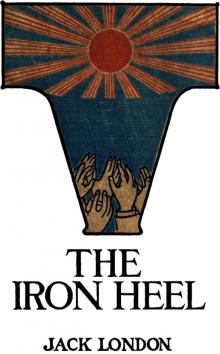 The Iron Heel
The Iron Heel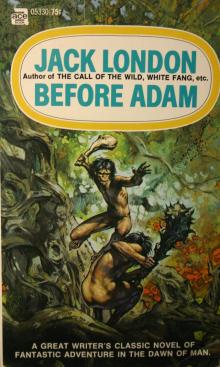 Before Adam
Before Adam Smoke Bellew
Smoke Bellew The Call of the Wild
The Call of the Wild The Valley of the Moon Jack London
The Valley of the Moon Jack London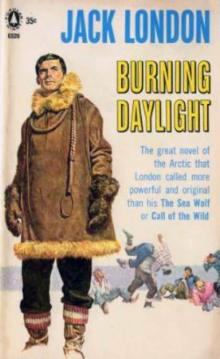 Burning Daylight
Burning Daylight The Sea Wolf
The Sea Wolf White Fang
White Fang A Daughter of the Snows
A Daughter of the Snows The Night-Born
The Night-Born A Son Of The Sun
A Son Of The Sun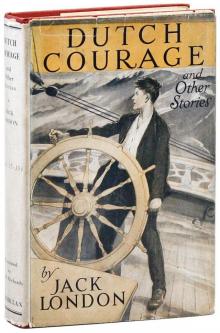 Dutch Courage and Other Stories
Dutch Courage and Other Stories The People of the Abyss
The People of the Abyss Michael, Brother of Jerry
Michael, Brother of Jerry Love of Life, and Other Stories
Love of Life, and Other Stories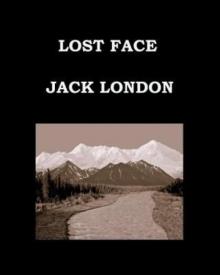 Lost Face
Lost Face The Road
The Road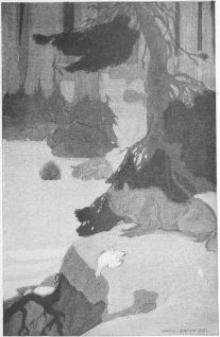 Love of Life
Love of Life The Turtles of Tasman
The Turtles of Tasman The Cruise of The Dazzler
The Cruise of The Dazzler The Heathen
The Heathen The Scab
The Scab The Faith of Men
The Faith of Men Adventure
Adventure The Assassination Bureau, Ltd.
The Assassination Bureau, Ltd. The Call of the Wild, White Fang, and Other Stories
The Call of the Wild, White Fang, and Other Stories The Call of the Wild and Selected Stories
The Call of the Wild and Selected Stories Jerry of the Islands
Jerry of the Islands Hearts of Three
Hearts of Three The House of Pride
The House of Pride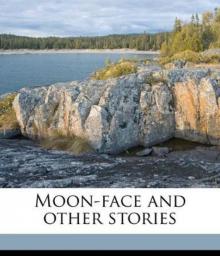 Moon-Face and Other Stories
Moon-Face and Other Stories Children of the Frost
Children of the Frost South Sea Tales
South Sea Tales The Strength of the Strong
The Strength of the Strong The Jacket (The Star-Rover)
The Jacket (The Star-Rover) The Little Lady of the Big House
The Little Lady of the Big House John Barleycorn
John Barleycorn ADaugter of Snows
ADaugter of Snows The Mutiny of the Elsinore
The Mutiny of the Elsinore Northland Stories
Northland Stories Tales of the Fish Patrol
Tales of the Fish Patrol Call of the Wild and White Fang (Barnes & Noble Classics Series)
Call of the Wild and White Fang (Barnes & Noble Classics Series)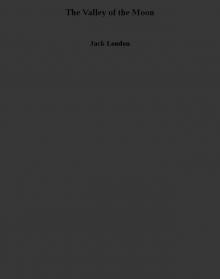 The Valley of the Moon
The Valley of the Moon The Cruise of the Snark
The Cruise of the Snark The Game
The Game An Autobiography of Jack London
An Autobiography of Jack London